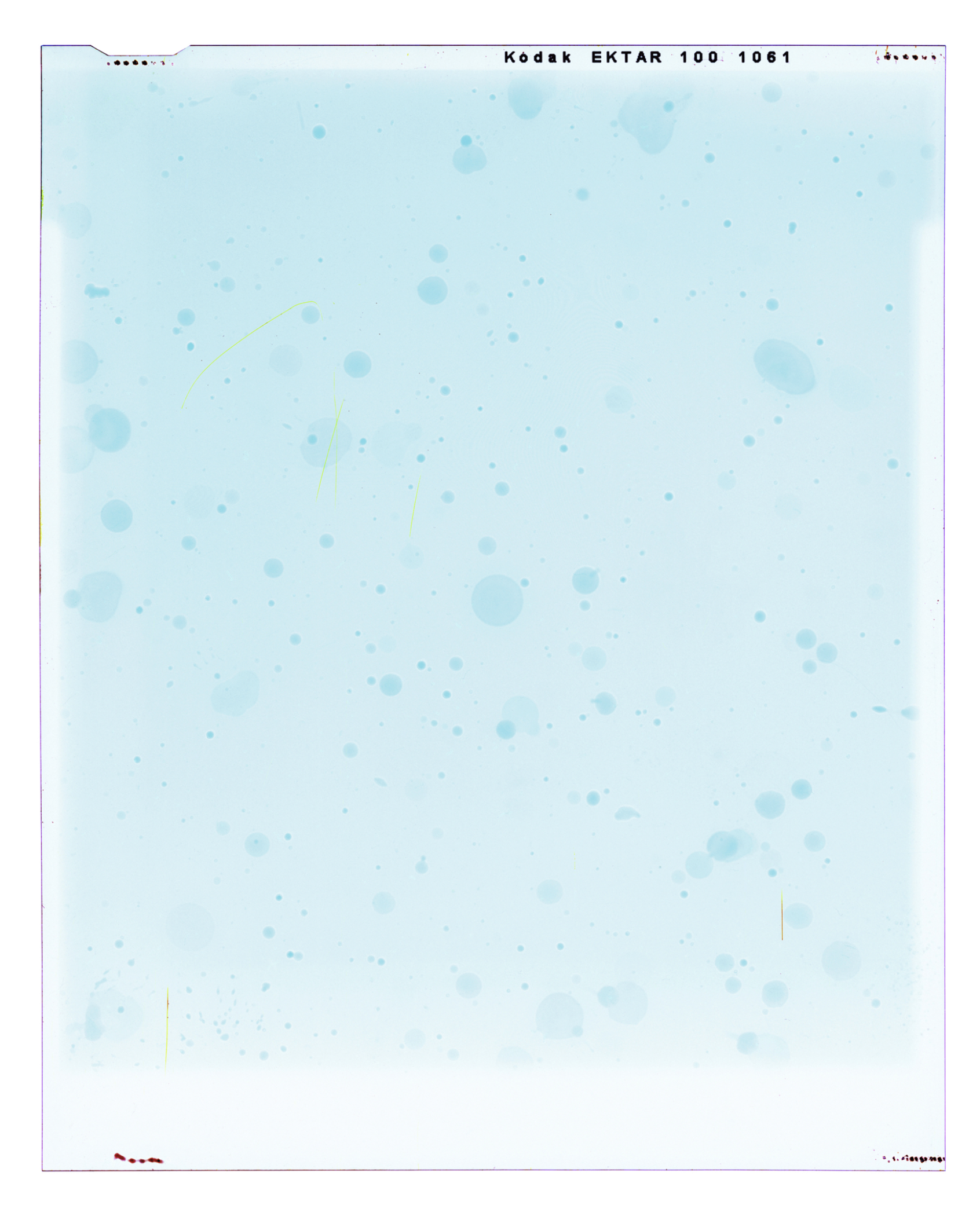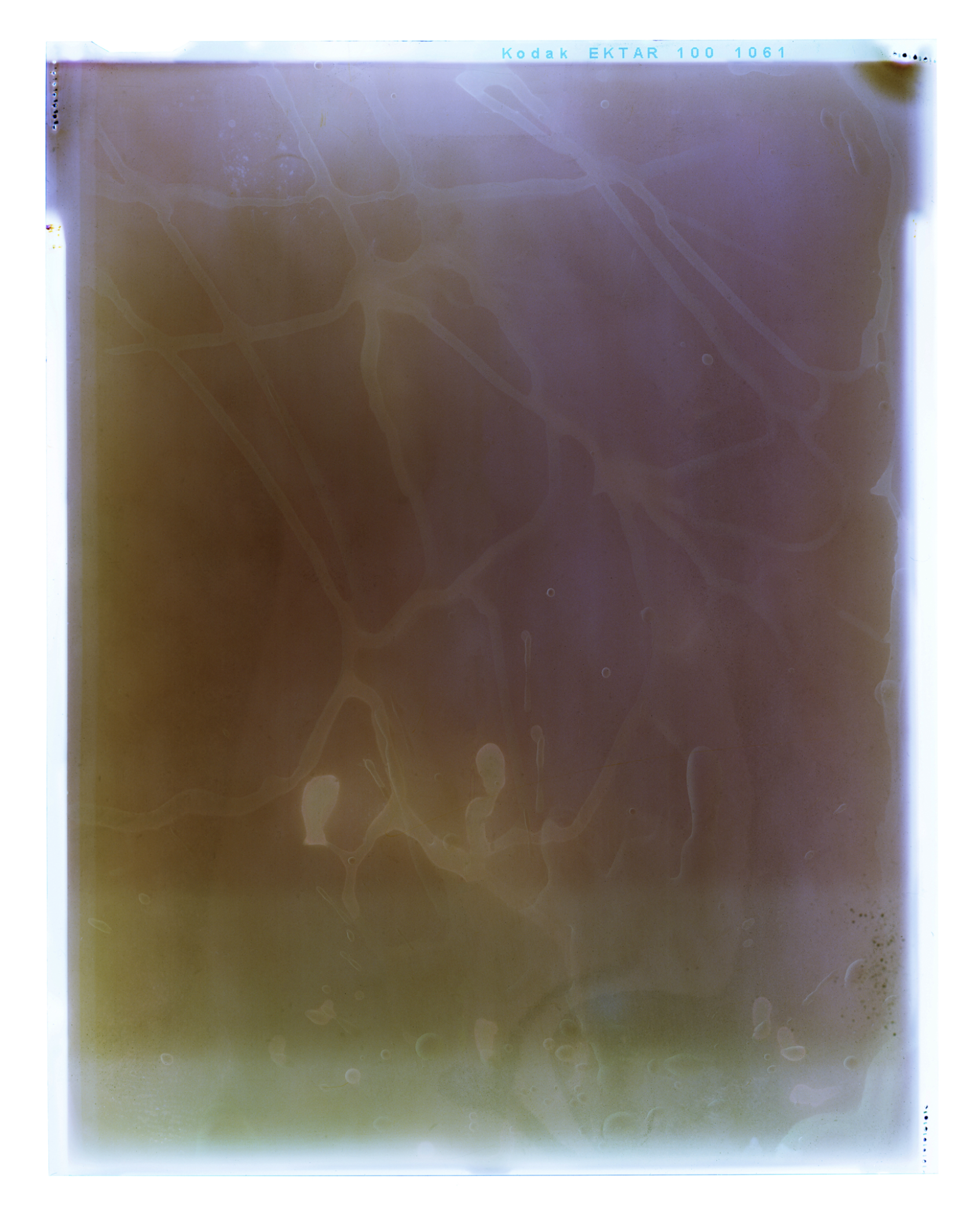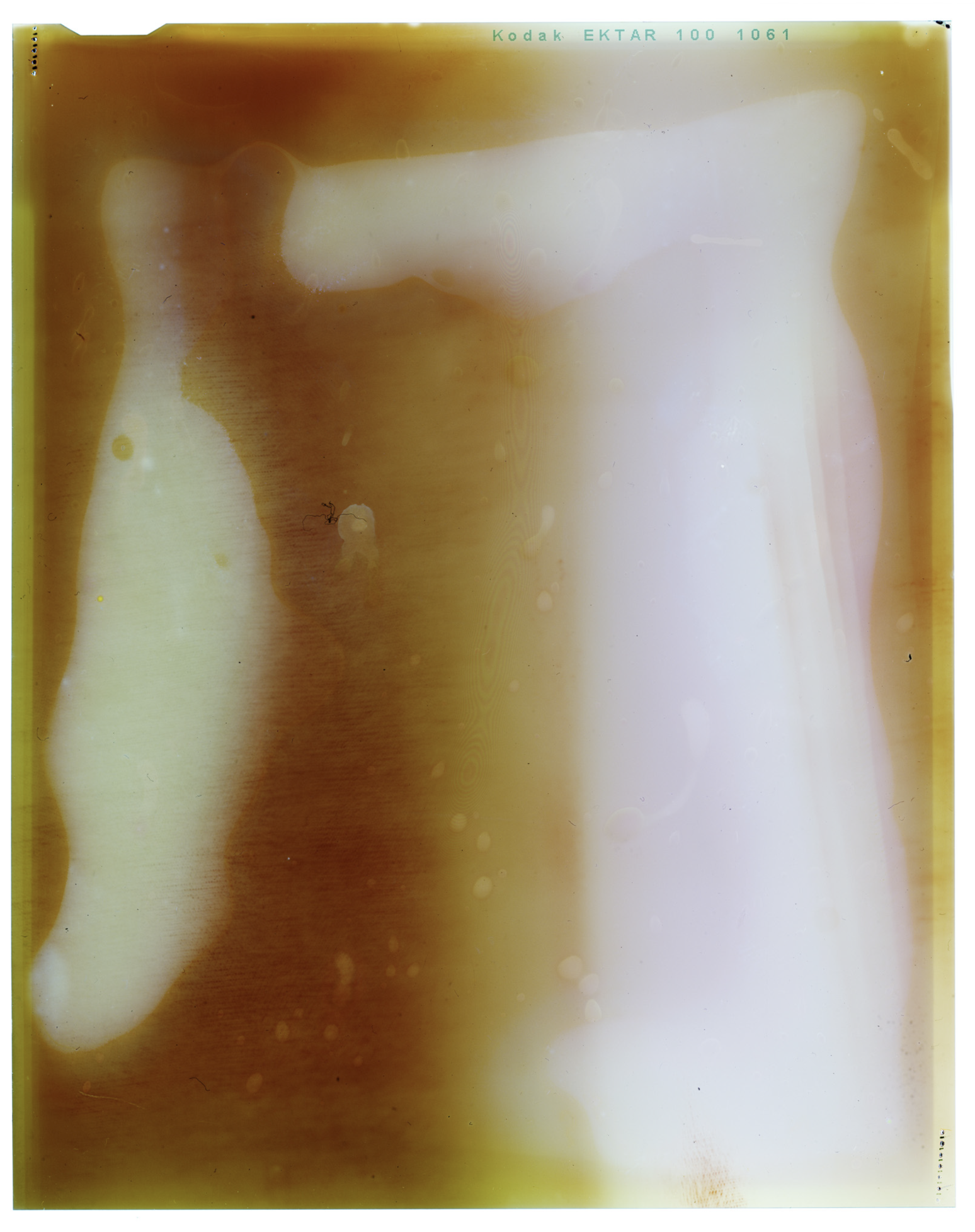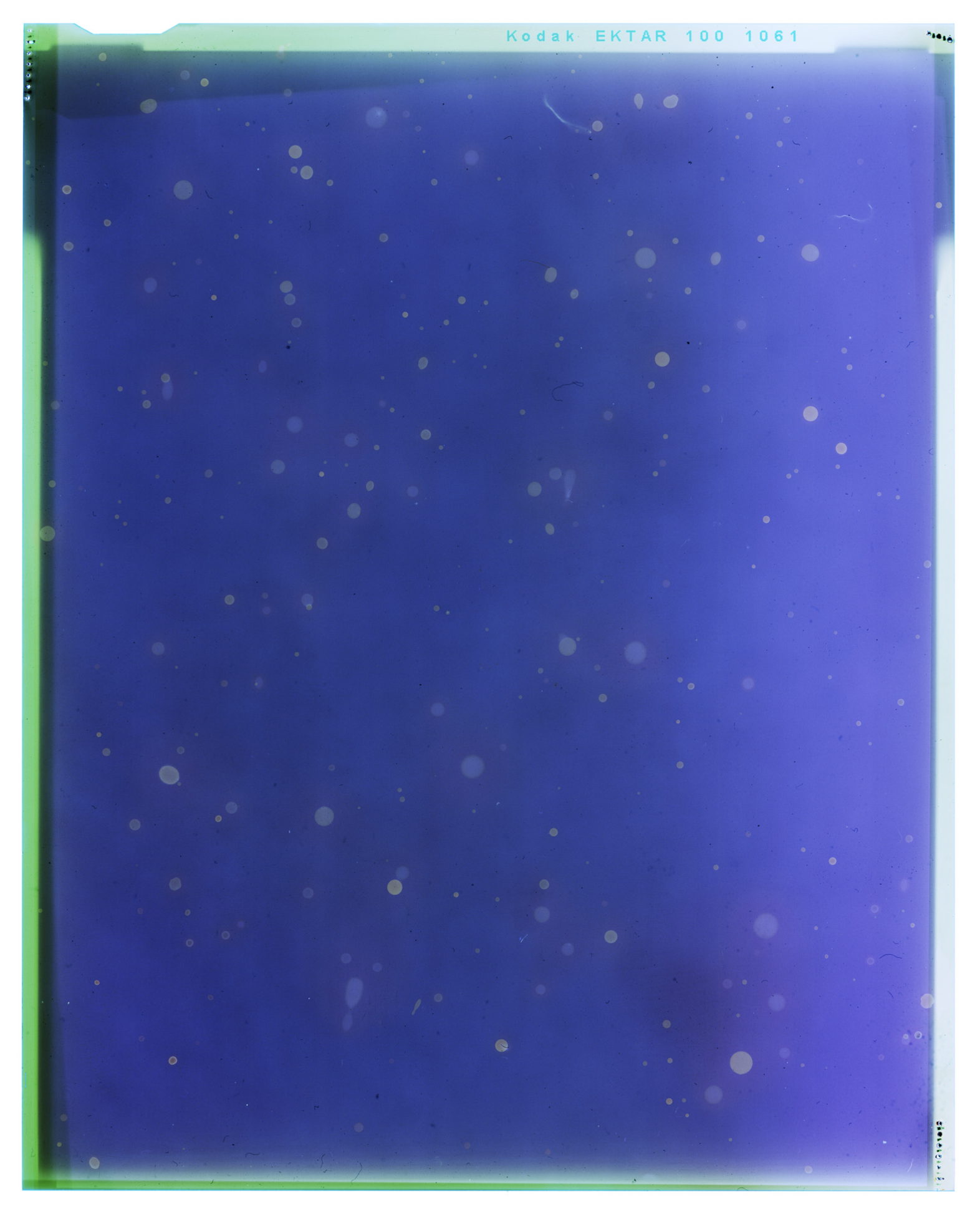Responding Rain offers a photographic visualisation of the invisible fluctuations in the chemical composition of our surroundings, such as occur in light and air pollution. On rainy nights, Segers left light-sensitive material outside that reacted to the toxins and other chemicals in raindrops. These chemicals left behind direct imprints, while the light pollution in the air was partly responsible for the background colour of the (once again) abstract images.
Light, sound and toxic pollution are disrupting the biorhythm of humans, animals and insects. It disrupts natural patterns of (wild)life and ecosystems, harms biodiversity, and contributes to an increase in carbon dioxide in the atmosphere. Many species are affected by light pollution, including humans, amphibians, birds, mammals, insects, moths, bats, frogs, turtles, and birds.The acidity in acid rain can cause damage to plants, aquatic animals, infrastructure, and buildings. Acid rain is related to the release of sulfur dioxide and nitrogen oxides into the atmosphere caused by human activities such as burning fossil fuels, industrial manufacturing, oil refineries, the meat industry, generation of electricity, and transport.
These photographs don't depict the world from a representational attitude but collaborate directly with the matter. Segers' research aims to respond to and co-create with the unstable and risky components, it seeks to distort the photographic program into an unstable technical system that interacts with; and activates ideas of speculative realism, global climate issues and the paradox of achieving technical stability while we are in a state of extreme fragility.
Light, sound and toxic pollution are disrupting the biorhythm of humans, animals and insects. It disrupts natural patterns of (wild)life and ecosystems, harms biodiversity, and contributes to an increase in carbon dioxide in the atmosphere. Many species are affected by light pollution, including humans, amphibians, birds, mammals, insects, moths, bats, frogs, turtles, and birds.The acidity in acid rain can cause damage to plants, aquatic animals, infrastructure, and buildings. Acid rain is related to the release of sulfur dioxide and nitrogen oxides into the atmosphere caused by human activities such as burning fossil fuels, industrial manufacturing, oil refineries, the meat industry, generation of electricity, and transport.
These photographs don't depict the world from a representational attitude but collaborate directly with the matter. Segers' research aims to respond to and co-create with the unstable and risky components, it seeks to distort the photographic program into an unstable technical system that interacts with; and activates ideas of speculative realism, global climate issues and the paradox of achieving technical stability while we are in a state of extreme fragility.
Responding Rain, 2019, Raingram captured on 4x5inch color sheets, 21x31cm
Responding Rain, 2023, Positive/Negative of 4x5inch color sheets on Fuji Metallic Pearl, 42x58cm
Responding Rain, 2023, Positive/Negative of 4x5inch color sheets on Fuji Metallic Pearl, 42x58cm







